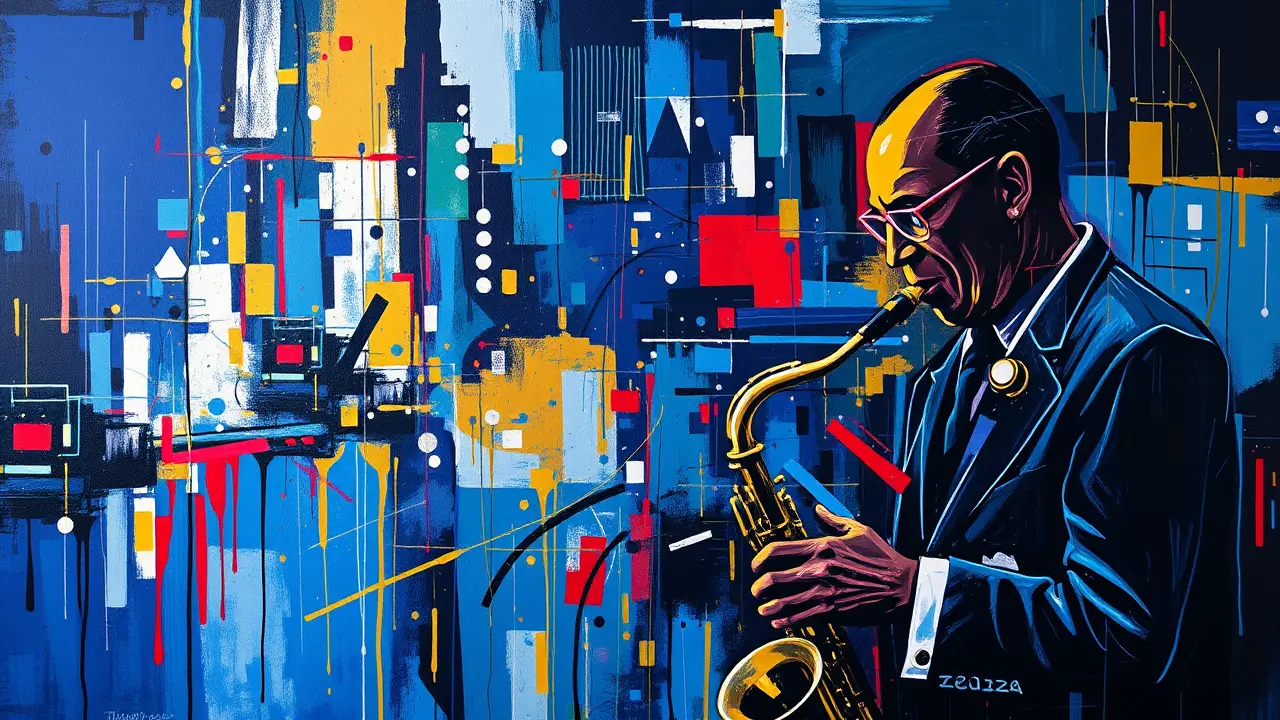Arthur Monroe's Jazz Abstractions Are Suddenly Everywhere
The art world is humming with a rhythm it hasn't felt in decades, a syncopated beat brought back to life by the pulsing abstractions of Arthur Monroe, an artist whose work is experiencing a renaissance as resonant as a long-lost jazz standard finding a new audience. With a compelling new show at Van Doren Waxter and a recent, critically acclaimed museum exhibition at the Sonoma Valley Museum of Art, Monroe’s canvases are no longer quiet background music; they are the main event, the headliner commanding a crowded room.To understand this sudden ubiquity is to listen to the visual music he created, a form of American Jazz Abstract Expressionism that translates the improvisational genius of a Charlie Parker saxophone solo or a Thelonious Monk piano riff into a riot of color and form. Monroe, working in the post-war era, was less a painter and more a composer, using his brush like a horn, laying down melodies in sweeping strokes of cobalt blue and fiery red, then responding to his own lines with counter-melodies in dripping gold and deep umber.His process was pure bebop—fast, complex, and born of spontaneous creation, a stark contrast to the more calculated, minimalist trends that would later dominate. For years, his work was the b-side, the deep cut cherished by aficionados but overlooked by the mainstream galleries and auction houses that favored his more famous contemporaries.Yet now, the cultural playlist has shuffled, and the art market, much like the music industry rediscovering analog warmth in a digital age, is craving the raw, emotional authenticity Monroe offers. Curators and collectors are finally tuning into the frequency he was broadcasting all along, recognizing in his chaotic, vibrant compositions a prefiguration of modern street art's energy and the digital glitch's aesthetic.This isn't just a revival; it's a re-evaluation, a critical correction that places Monroe squarely in the canon of great American artists, his canvases now seen not as mere period pieces but as timeless recordings of creative freedom. The buzz at the Van Doren Waxter opening wasn't just polite applause; it was the electric feeling of a crowd hearing a masterpiece for the first time, a collective realization that we had been missing a fundamental track in the soundtrack of 20th-century art. As his paintings command higher prices and fill more column inches, the narrative shifts from one of obscurity to one of vindication, proving that truly great art, like a perfect song, always finds its moment to be heard again, its rhythms forever alive, waiting for the world to catch up.
Latest News
The charts are whispering what the true believers have felt in their bones for weeks—Dogecoin is carving out a bottom.
17 hours ago5 comments
The Institute for Fiscal Studies has thrown a stark warning onto Rachel Reeves's desk, urging the Chancellor to confront a potential £22 billion shortfall in
17 hours ago3 comments
Alright, let's break down this absolute heater of a performance from the Chicago Blackhawks, because if you missed this one, you missed a party.
18 hours ago5 comments
The ice was hot last night in the NHL, folks, serving up a slate of games that felt less like a regular season Tuesday and more like a playoff preview with a
18 hours ago3 comments
The XRP chart is painting a tantalizing picture for those with the stomach to withstand the relentless pressure from crypto's leviathans.
18 hours ago4 comments
It’s in the small shifts, the quiet recalibrations of a Thursday morning, where the most meaningful change often takes root.
18 hours ago4 comments
In a move that sent ripples of quiet confidence through the crypto ecosystem, blockchain intelligence firms tracked a monumental treasury allocation from
18 hours ago4 comments
In a move that would have drawn a nod of approval from historical figures like Churchill, who understood the delicate balance of power within democratic
18 hours ago2 comments
JA
Jamie Larson123k1 day ago
wait so he was just ignored for years and now he's a genius smh the art world is so weird
0
JA
Jamie Lopez123k1 day ago
interesting but idk if the art market suddenly craving 'authenticity' is that deep tbh feels a bit like the usual hype cycle
0
JA
Jamie Larson123k1 day ago
posting this at 2am for the algorithm gods 😅 but for real tho the art world just discovered an algorithm for 'cool' and it's this guy
0
LE
Lena Schmidt123k1 day ago
we're seeing the same shift in europe, tbh his work feels like it was always meant for a global audience
0
JA
Jamie Larson123k2 days ago
wait i'd never even heard of this guy before this is so cool
0
JA
Jamie Larson123k2 days ago
finally getting the recognition he deserves, took them long enough
0
